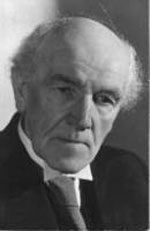Pianist Lucas Debargue, more than many soloists, crafts his concert programs with care. At his Carnegie Hall concert on Feb. 2, presented by Cherry Orchard Festival, he artfully used music of Bach, Beethoven and Chopin to set up the rarely heard Piano Sonata in F Minor by 20th-century Russian composer Nicolas Medtner. In so doing Debargue made it not only possible, but easy, to discern contiguities in these keyboard pieces from three centuries.
Importantly, he also made a solid case for the excellence of the youthful Medtner sonata, written at the turn of the 20th century when the composer was just 20.
In the concert’s first half Debargue cast fresh light on some very well-known music: two Chopin Ballades, a Prelude and Fugue from Bach’s Well-Tempered Clavier, and the Piano Sonata No. 14 in C-sharp Minor by Beethoven, best known as the “Moonlight” Sonata.
Read our recent interview with Lucas Debargue
Debargue began Bach’s Prelude and Fugue in E-flat Major deliberately. He carefully modulated his dynamics to sustain clarity of tone through the contemplative Prelude. He took no liberties with the brief Fugue, keeping it at one volume level as if to remind us that Bach was not writing for the modern pianoforte with its huge dynamic range.
The contemplative flavor of the Bach Prelude found echoes in the opening allegretto of Chopin’s Ballade No. 3 in A-flat Major. In Debargue’s hands the Chopin danced through an assortment of moods: lilting, extravagant, rueful, tempestuous, gently playful, carnivalesque. It’s the composer at his most representational, almost visual, and Debargue conveyed the piece with flawless artistry.
Moonlight at Carnegie Hall
Debargue took the famous first movement of the Moonlight Sonata at a slow, steady tempo, creating a church-like atmosphere, decidedly schmaltz-free, and without the drama that 20th-century pianists tended to squeeze from these iconic chords and the slow, tolling melody that adorns them so solemnly. Deploying only mild contrasts Debargue revealed the pure essence of the music. I felt I could hear the influence of his close study of Scarlatti’s sonatas.
The second movement, again on the slow side, was a due respite of light, gamboling energy. Then in the stormy finale Debargue showed off his fleet-fingered technique, Beethoven’s climbing arpeggios blurring into psychedelic clouds. When the left hand took over the melody the pianist produced a sturdy growl, one of the many colors he drew from the piano over the course of the full sonata.

Hearing the parallels between the third movement of the Beethoven and the Chopin, I found I was already perceiving the wisdom of Debargue’s program.
The Beethoven flowed into more Chopin, the titanic Ballade No. 4 in F minor. Here Debargue displayed controlled athleticism to draw forth Chopin’s rhythmic and harmonic complexities and brazen experimentation with boundaries. It was a marvelous performance that drew a standing ovation.
The Momentousness of Youth
The turbulence of the stunning first movement of Medtner’s first piano sonata locked right into the convulsions of the finale of the Moonlight Sonata and the romantic eruptions of the Chopin Ballades. Melodies and rolling left-hand accompaniment indeed sounded Chopinesque in Debargue’s dazzling performance. Technically, the piece surely counts as a marvelous achievement for a 20-year-old composer. Emotionally, though, it perfectly reflects the momentousness that clings to events and emotions during one’s youth.
The second movement with its constricted emotional palette starkly contrasts with the first. Faintly ominous descending chromatics in the left hand undergird the insistently repeating main theme in the right. This intermezzo flows directly into the third movement, which provides a measure of peace, even if qualified and indecisive. The pianist explicated its beautiful harmonic language with great clarity.

The final movement of the Medtner unfolds with fearsome major-key fireworks, though a sly smile seems to float along with the agitation. For an encore, Debargue understandably slowed things down with a sweet little piece whose melody I recognized but couldn’t place. (I couldn’t make out what he said in his spoken introduction). It turns out it was his own gentle piano transcription of Fauré’s song “Après un rêve.” And he had enough energy for a second, more dynamic encore: his own “paraphrase” of Fauré’s “Cantique de Jean Racine” for mixed choir and keyboard.
Those served as a good advertisement for Debargue’s lastest album, Fauré: Complete Music for Solo Piano. That project is another indication of what a well-rounded musician he is, as he focuses in turn, or simultaneously, on the wide range of music exemplified by Domenico Scarlatti, Nicolas Medtner, and Fauré, all while keeping in his repertoire some of the greatest hits of the classical and romantic eras as exemplified by this fiery Carnegie Hall appearance.
Lucas Debargue is touring Europe this spring. Check his schedule for upcoming concerts.
 Blogcritics The critical lens on today's culture & entertainment
Blogcritics The critical lens on today's culture & entertainment




